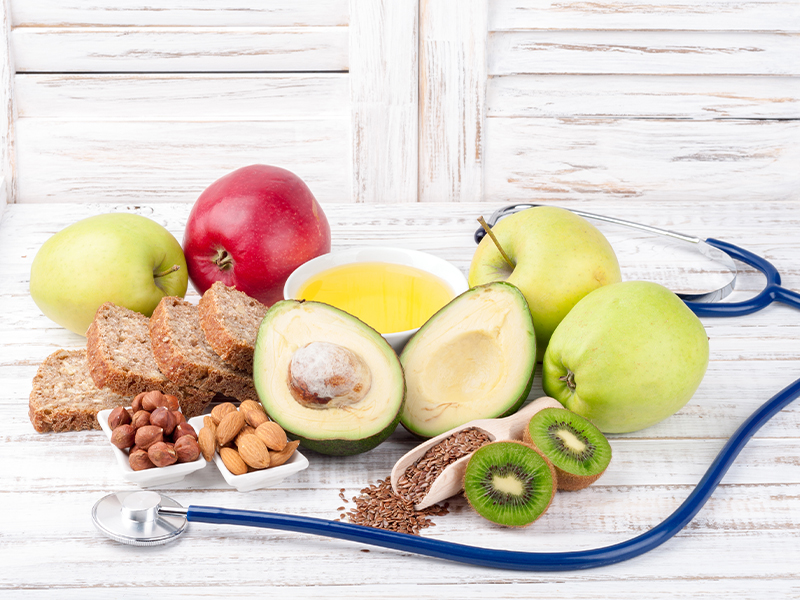
We’ll Show You: Max International’s Commitment to Proven Wellness
We’ll Show You: Beyond Rhetoric to Real Evidence In the crowded health and wellness landscape,

Talk of diets, nutrition, and health can eventually include the subject of fat. Fat. Many people hear the word and say to themselves, “Here come the reasons why eating fat is bad.” And many times they’re right on. Then there’s an explanation of the negative effects fat has on the body’s health, including the heart. And, there’s much being exchanged about its role in weight management.
To be fair, though, that’s only half of it. Fat isn’t getting its better shake because the less talked about types of fats include ones that are Good and are great for everyone to know. They’re ones that aren’t often discussed in those day-to-day, casual conversations.
So, for goodness’ sake, forget for a second about the bad- ness of bad-fat. For the sake of what’s better today and for the future, focus for a moment on facts that are important about the seemingly forgotten facts that are really Good.
First, body chemistry, biology, and trillions of cells like good fats. More importantly, they NEED them. Good fats are not only good, but they’re also necessary constituents for maintaining vital organ health and function, organ protection, and promoting other numerous health and wellness processes and systems throughout the entire human body. Good fats are real. And total body health and wellness thrive on them.
Without enough good fat, health declines. Good health is dependent on sufficient and effective levels of certain fats (monounsaturated and polyunsaturated specifically*). Fatty acids, the class of nutrients known as lipids, and cholesterol-friendly types of fat the body needs. Deficiency in any of the many types of Good Fats can diminish health, leaving it more prone to certain diseases, malfunctioning organ systems, and a decline in healthful functions.
Good Fats, Bad Fats — Know the Facts
There are four kinds of fats:
They differ in chemical structure and physical characteristics. They have been categorized by the absence (saturated and trans) or presence of double and triple bonds (mono- and polyunsaturated) in their carbon chain. Saturated fats and Trans fats are considered “the bad” fats. In food terms they are usually solid at room temperature (like shortening, palm oil, and margarine). Monounsaturated and polyunsaturated fats are “the Good” fats and are more liquid (like canola oil and certain fish oils) in consistency at room temperature.
Fats are found in the following general types of foods (with good and bad representations within almost every type and can be found in many more):
Of these,
Bad Fats include the following basics:
Good Fats Include the following basics:
Saturated fat should not exceed 10% of daily calories, and trans fats— think French Fries and doughnuts — should be excluded entirely.
The Benefits of Fat
(Good Fats First)
Monounsaturated and polyunsaturated fats and their fatty acid building blocks are incredibly important because – at effective levels – they:
Saturated and Trans fats are considered unhealthy because, in excess:
The Good and Bad Takeaways –
(Fat Check for Optimum Health and Wellness)
These Facts about Fat are Good to know and include the reasons why Bad Fat should be kept to a minimum — moderate intake of the Bad Fat; Generous with the Good Fats.
Live To The Max.
About Live Max
Backed by decades of research, patented and recommended by many healthcare professionals, our products help you to live to the MAX.
MAX products work. After years of research and strict science, Max chemists engineered the unique and patented RiboCeine™ technology only Max has. RiboCeine™ promotes the natural production of Glutathione, the body’s master antioxidant and primary protector of your cells.
You might also enjoy

We’ll Show You: Beyond Rhetoric to Real Evidence In the crowded health and wellness landscape,

Only Max Delivers: Validating Claims with Unmatched Transparency Max International isn’t just making claims—we’re backing

In the sprawling universe of health supplements, buzzwords and bold claims often overshadow the truth.

MaxATP is not just another energy drink. It’s a scientifically validated, premium quality energy drink

When it comes to supplements, better absorption is the game-changer. Max International’s patented RiboCeine™ technology

Welcome to Max. We know what searching for the best supplements and nutritional replenishment feels

Max’s patented RiboCeine™ technology promotes the natural production of Glutathione, the body’s master antioxidant. Discover what enhanced Glutathione can do for you.
† * These statements have not been evaluated by the Food and Drug Administration. This product is not intended to diagnose, treat, cure or prevent any disease.
The truth is, we can’t just take Glutathione over the counter and effectively absorb it. Most supplements lack what is known as “bioavailability”, which is the ability to be absorbed by the body on a cellular level. The active ingredients in most supplements are expelled from the body without any benefit to you, which is a waste of time and money.

Max’s proprietary RiboCeine technology was designed specifically to help our body’s produce Glutathione naturally within our cells and avoid the challenge of low bioavailability.
When effectively absorbed, RiboCeine helps to combat toxins, free radicals and oxidative stress. Oxidative stress damages cells, compromising our overall health.*
With the health obstacles we all face, now more than ever is the time we should be looking to maximize our health.
RiboCeine is easily absorbed and enables the cells to create glutathione naturally to help strengthen a healthy immune system.
It is a unique molecule that combines ribose and cysteine, nutrients that occur naturally in our bodies. The cells then use the ribose and cysteine to naturally produce Glutathione as well as ATP – our cells’ natural fuel and source of energy.
* These statements have not been evaluated by the Food and Drug Administration. This product is not intended to diagnose, treat, cure or prevent any disease.